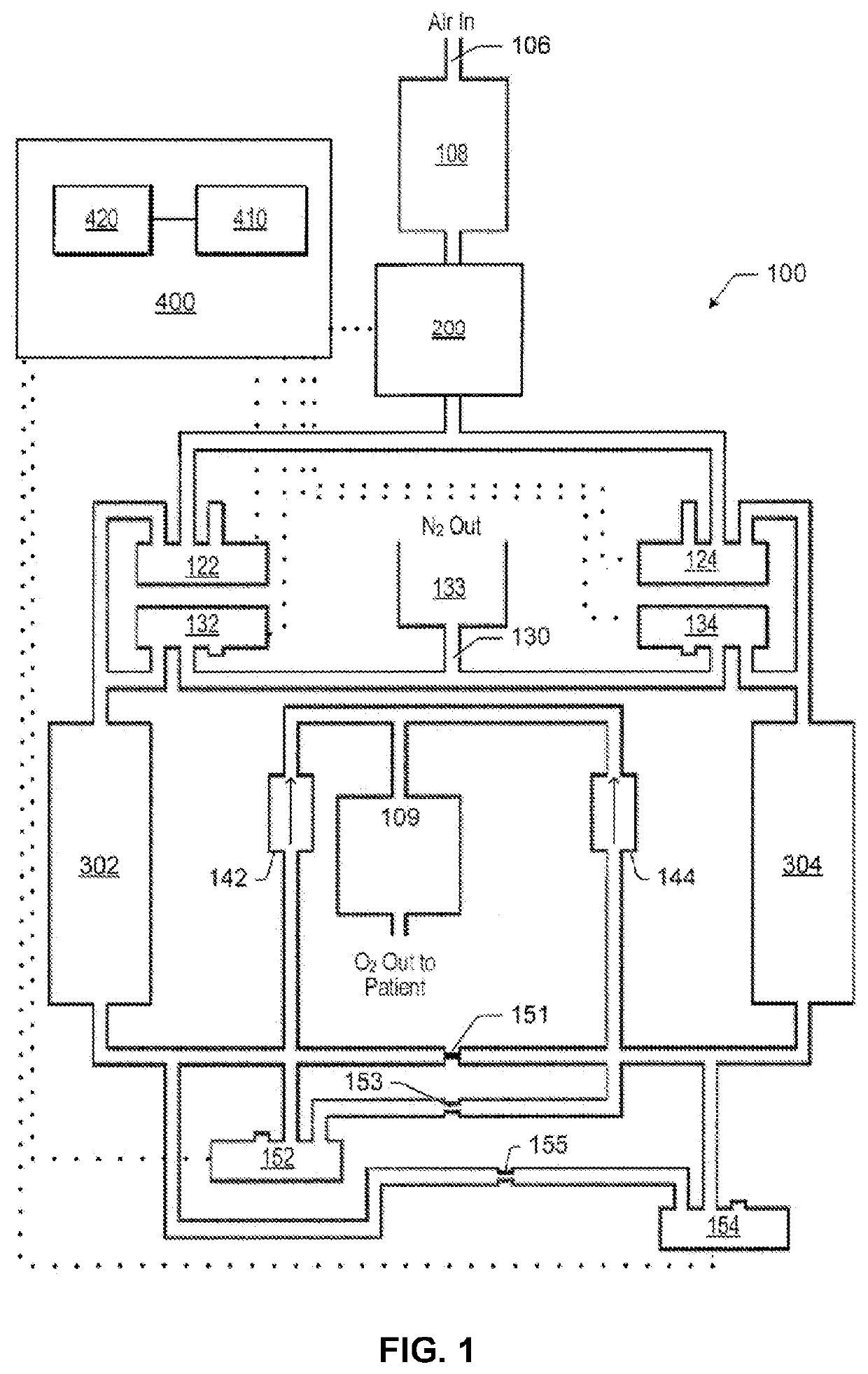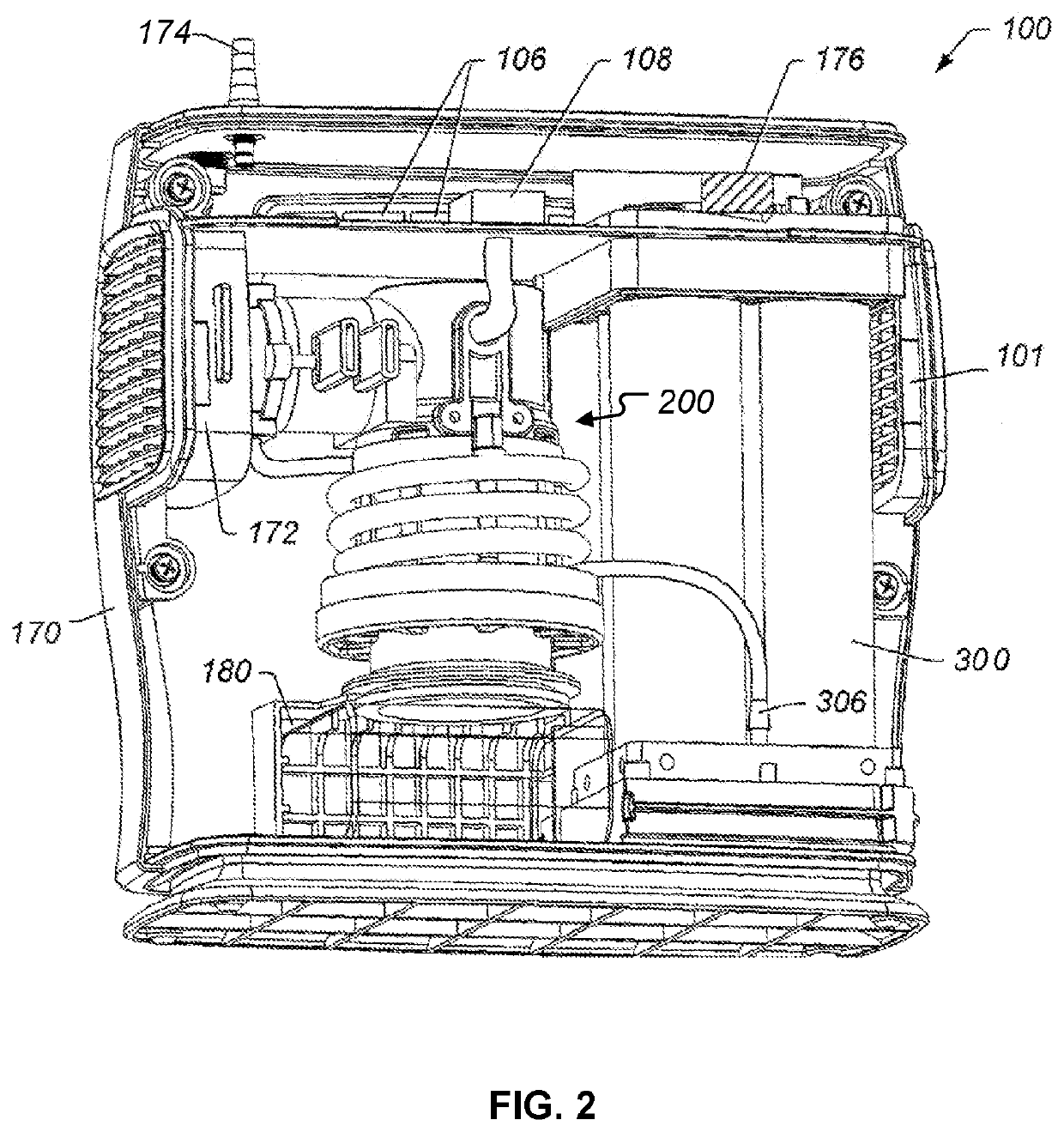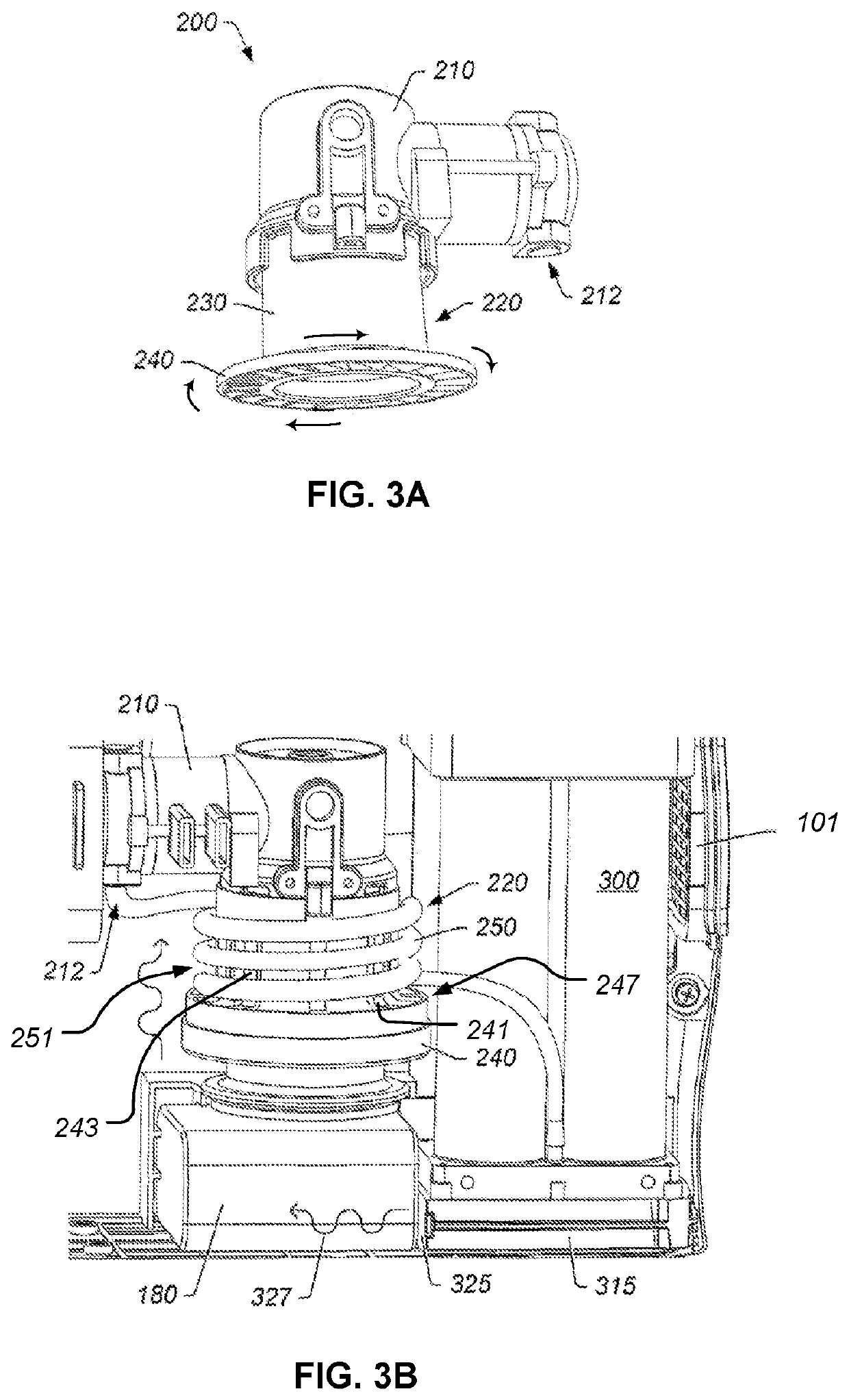Methods and apparatus for treating a respiratory disorder
a technology for respiratory disorders and respiratory disorders, applied in the field of respiratory disorders, can solve the problems of inability to carry ordinary ambulatory activities with them, limited oxygen supply, and inability to meet the needs of users, and achieve the effects of improving the control of pulsed oxygen delivery, facilitating oxygen delivery, and facilitating oxygen delivery
- Summary
- Abstract
- Description
- Claims
- Application Information
AI Technical Summary
Benefits of technology
Problems solved by technology
Method used
Image
Examples
Embodiment Construction
[0057]The present technology may be understood in accordance with the terminology used herein. Headings are for organizational purposes only and are not meant to be used to limit or interpret the description or claims. As used in this specification and the appended claims, the singular forms “a”, “an”, and “the” include singular and plural referents unless the content clearly dictates otherwise. Furthermore, the word “may” is used throughout this application in a permissive sense (i.e., having the potential to, being able to), not in a mandatory sense (i.e., must). The term “include,” and derivations thereof, mean “including, but not limited to.”
[0058]The term “coupled” as used herein means either a direct connection or an indirect connection (e.g., one or more intervening connections) between one or more objects or components. The phrase “connected” means a direct connection between objects or components such that the objects or components are connected directly to each other. As u...
PUM
| Property | Measurement | Unit |
|---|---|---|
| Time | aaaaa | aaaaa |
| Flow rate | aaaaa | aaaaa |
| Size | aaaaa | aaaaa |
Abstract
Description
Claims
Application Information
 Login to View More
Login to View More - R&D
- Intellectual Property
- Life Sciences
- Materials
- Tech Scout
- Unparalleled Data Quality
- Higher Quality Content
- 60% Fewer Hallucinations
Browse by: Latest US Patents, China's latest patents, Technical Efficacy Thesaurus, Application Domain, Technology Topic, Popular Technical Reports.
© 2025 PatSnap. All rights reserved.Legal|Privacy policy|Modern Slavery Act Transparency Statement|Sitemap|About US| Contact US: help@patsnap.com



